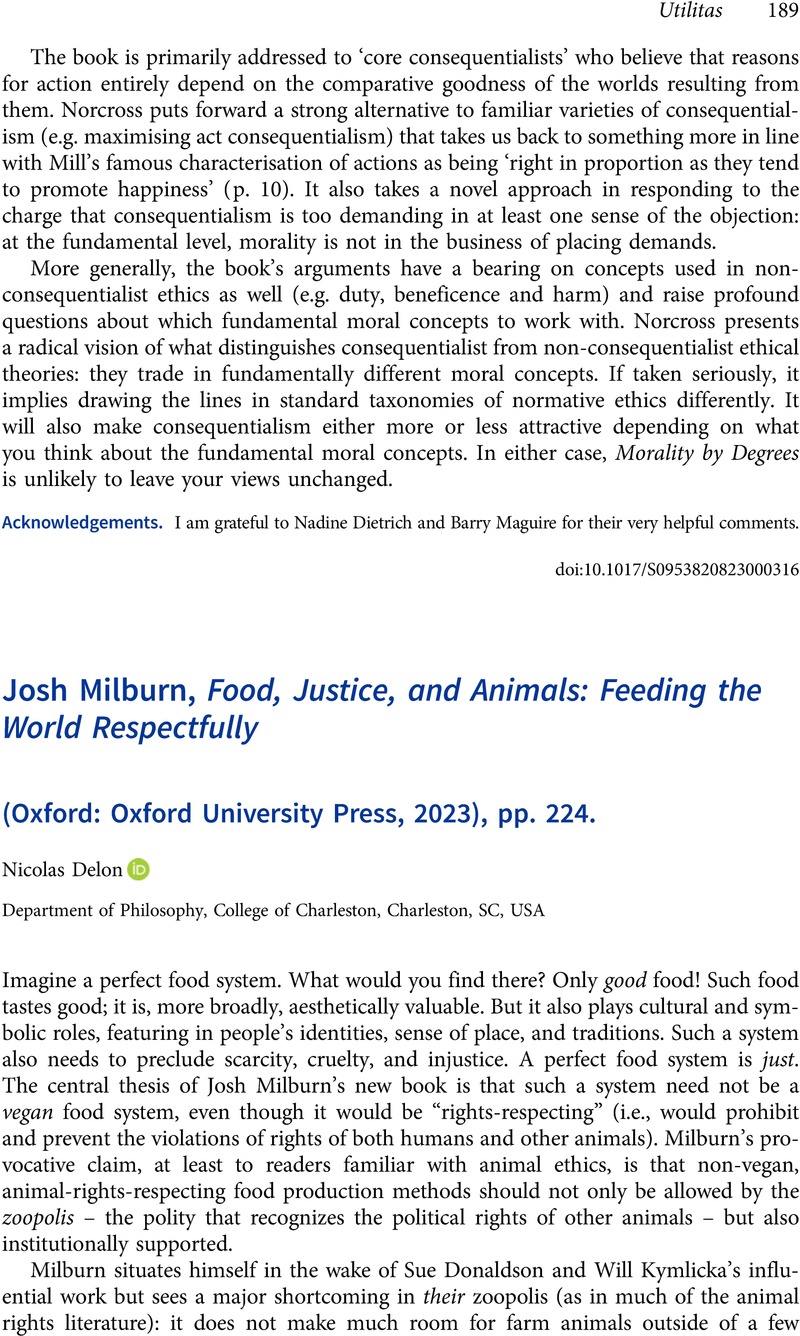No CrossRef data available.
Josh Milburn, Food, Justice, and Animals: Feeding the World Respectfully (Oxford: Oxford University Press, 2023), pp. 224.
Review products
Josh Milburn, Food, Justice, and Animals: Feeding the World Respectfully (Oxford: Oxford University Press, 2023), pp. 224.
Published online by Cambridge University Press: 29 January 2024
Abstract
An abstract is not available for this content so a preview has been provided. Please use the Get access link above for information on how to access this content.

Information
- Type
- Book Reviews
- Information
- Copyright
- Copyright © The Author(s), 2024. Published by Cambridge University Press


